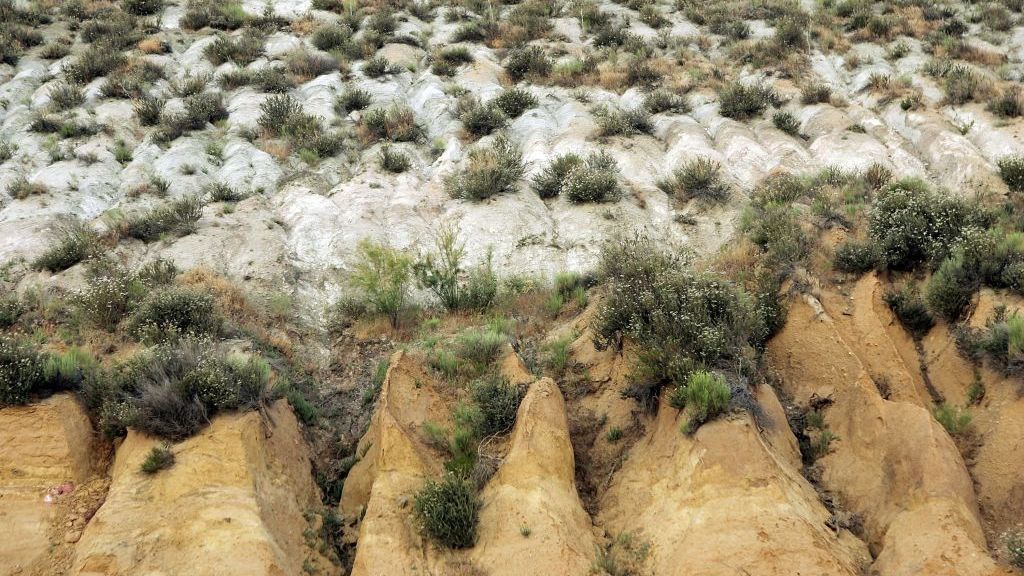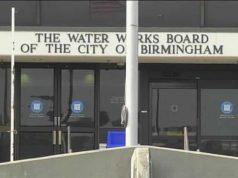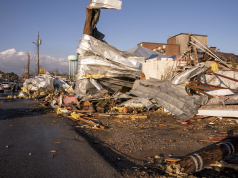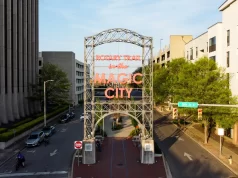
The San Andreas Fault in California is creeping slowly but may soon give the country a jolt, similar to the 1906 earthquake that killed 3,000 and leveled San Francisco.
The 800-mile-long fault runs from north to south through California and Mexico, forming the boundary between the North American and Pacific tectonic plates. The two plates grind against each other along the fault, producing seismic events, moving 0.79 to 1.38 inches per year in a process called continental drift.
The San Andreas Fault is made up of three sections, each shifting independently past each other like two hands being rubbed together. At the northernmost and southernmost ends, the massive continental plates are usually locked together. But as stress increases along the boundaries, the plates can eventually slip violently against each other, causing earthquakes.
At the central section of the fault, the two plates slip past each other at a relatively peaceful rate of just over an inch per year, thus avoiding earthquakes for the most part. This stress avoidance is called aseismic creep.

Rocks from nearly two miles below the Earth’s surface, however, reveal that the supposedly peaceful central section has seen violent earthquakes, some of which have been fairly recent.
In a study published in the journal Geology, chemical analysis of the rocks was used to gauge the heating of rocks, revealing evidence of quakes.
“This means we can get larger earthquakes on the central section than we thought,” said lead author Genevieve Coffey, who conducted the research as a graduate student at Columbia University’s Lamont-Doherty Earth Observatory. “We should be aware that there is this potential — that it is not always just continuous creep.”
History has recorded devastating tremors along the San Andreas Fault. The 1906 San Francisco earthquake registered 7.9 on the Richter scale along the northern section. In 1989, the Loma Prieta quake killed more than 60. The southern section saw the 1994 Northridge quake near Los Angeles, causing another 60 deaths. Stresses are building there for a quake of the same magnitude as the 1906 quake.

However, the fault’s central section seems harmless, except for a small area in the south that produces some quakes. Events of a magnitude of 6 take place there about every 20 years. Near Parkfield, California, seismologists drilled a borehole about two miles down to retrieve rock samples, while monitoring seismic activity on the surface and deep within the Earth.
When the plates slip, rocks along the fault line spike in temperature by hundreds of degrees above that of the surrounding rocks, altering organic compounds in sedimentary rock formations along the fault path. Using these so-called biomarkers, scientists used the altered composition of rock to map ancient earthquakes. By calculating the degree of heating, the distance of slippage can be estimated and thus the magnitude of those quakes.
The samples they brought up from the borehole indicated more than 100 tremors have taken place and that the San Andreas Fault jumped about 5 feet each time, representing quakes measuring 6.9 on the Richter scale, roughly equal to the Loma Prieta and Northridge quakes.
But many of the quakes may well have been larger than recent strong tremors. Researchers say quakes along the central section of the San Andreas Fault may have been similar to the devastating 1906 quake.
California’s current hazard model for insurance rates and building codes includes a large central-section quake as a remote possibility. However, the new study seems to provide evidence, apart from controversial mathematical models, that large quakes have indeed happened in the central area.

Coffey said dating the quakes remains an inexact science. By gauging the ratio of argon gas to radioactive potassium in rocks, scientists can estimate the rocks’ age: the higher the amount of argon is, the older the rock is — but not always.
The sedimentary rock they analyzed was formed tens of millions of years ago and comes from the ancient Pacific basin that was subducted or pushed beneath the North American plate. This means that the rocks along the slip zones appear to be as young as 3.2 million years as an upper age limit for the most recent quakes, said Coffey. But some may have occurred a few hundred or a few thousand years ago, she said.
The group is refining the age interpretations because they don’t know how much argon was driven out of the rock and thus how far the geological clock has been reset.
“Ultimately, our work points to the potential for higher-magnitude earthquakes in central California and highlights the importance of including the central [San Andreas Fault] and other creeping faults in seismic hazard analysis,” the authors wrote.
Morgan Page, a seismologist with the U.S. Geological Survey, said the “Big One” — a calamitous earthquake expected by Californians — might start at the southern end of the San Andreas, tear through the creeping center and wind up in the northern section.
“People should not be alarmed,” said co-author Stephen Cox, adding that California’s building codes have improved over the years. “Seismic events are inevitable. Work like this helps us figure out what is the biggest possible event and helps everyone prepare.”
Edited by Siân Speakman and Kristen Butler
Recommended from our partners
The post Mounting Pressure: Slow-Moving Section Of San Andreas Fault Remains A Danger appeared first on Zenger News.




